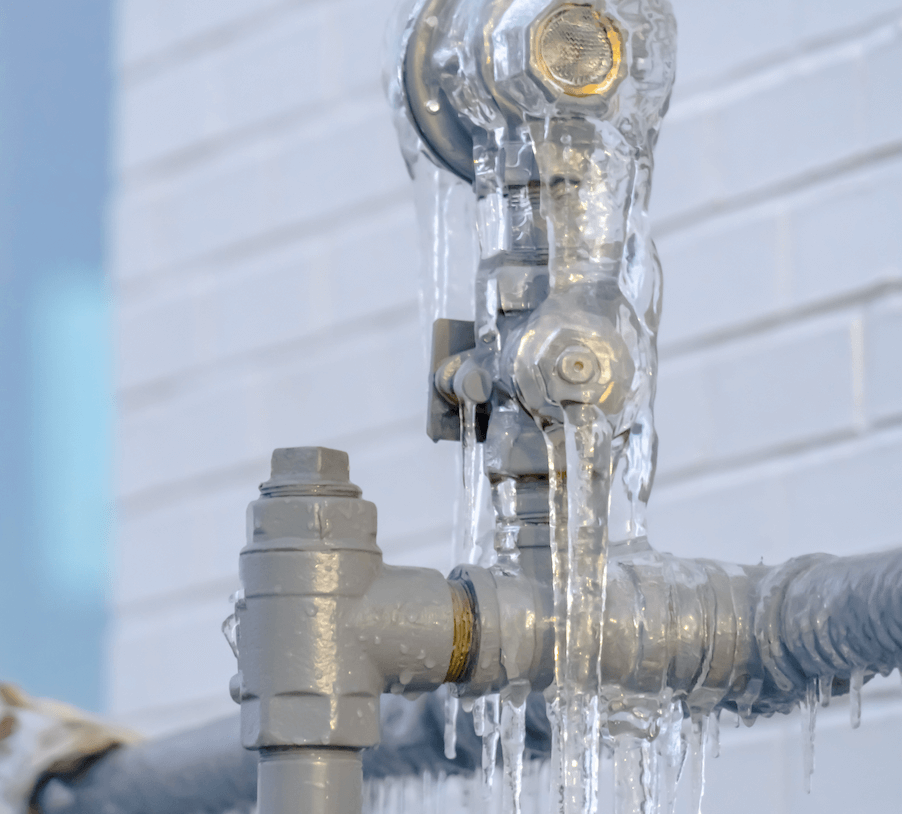Are you searching for insight around Winter Plumbing Precautions: Preventing Frozen Pipes?

Winter can damage your pipes, particularly by freezing pipes. Right here's exactly how to prevent it from occurring and what to do if it does.
Intro
As temperature levels drop, the danger of frozen pipelines increases, possibly resulting in pricey repairs and water damage. Comprehending exactly how to stop frozen pipes is important for home owners in cool environments.
Comprehending Icy Pipes
What causes pipelines to freeze?
Pipelines freeze when revealed to temperature levels listed below 32 ° F (0 ° C) for extended durations. As water inside the pipes ices up, it expands, putting pressure on the pipeline wall surfaces and potentially causing them to break.
Risks and damages
Frozen pipes can cause water supply interruptions, home damage, and costly repairs. Ruptured pipelines can flood homes and create substantial architectural damage.
Indications of Frozen Pipeline
Determining frozen pipes early can avoid them from rupturing.
Just how to recognize icy pipes
Look for lowered water circulation from taps, unusual smells or sounds from pipelines, and noticeable frost on subjected pipelines.
Prevention Tips
Protecting susceptible pipelines
Cover pipes in insulation sleeves or utilize warmth tape to shield them from freezing temperatures. Concentrate on pipelines in unheated or external locations of the home.
Home heating techniques
Keep interior rooms adequately heated, especially areas with pipes. Open up cabinet doors to permit cozy air to distribute around pipelines under sinks.
Safeguarding Exterior Plumbing
Garden hose pipes and outdoor taps
Detach and drain pipes yard tubes prior to winter. Install frost-proof spigots or cover exterior faucets with insulated caps.
What to Do If Your Pipes Freeze
Immediate activities to take
If you suspect frozen pipelines, maintain taps open to ease pressure as the ice melts. Utilize a hairdryer or towels taken in warm water to thaw pipelines slowly.
Long-Term Solutions
Structural changes
Think about rerouting pipes far from outside walls or unheated areas. Include added insulation to attic rooms, basements, and crawl spaces.
Upgrading insulation
Invest in premium insulation for pipes, attics, and wall surfaces. Correct insulation aids preserve regular temperature levels and decreases the danger of frozen pipes.
Final thought
Stopping icy pipes calls for proactive actions and fast feedbacks. By recognizing the causes, indications, and safety nets, homeowners can protect their plumbing during cold weather.
6 Proven Ways to Prevent Frozen Pipes and Protect Your Home
Disconnect and Drain Garden Hoses
Before winter arrives, start by disconnecting your garden hoses and draining any remaining water. Close the shut-off valves that supply outdoor hose bibs and leave the outdoor faucet open to allow any residual water to drain. For extra protection, consider using faucet covers throughout the colder months. It’s also important to drain water from any sprinkler supply lines following the manufacturer’s directions.
Insulate Exposed Pipes
Insulating your pipes is an effective way to prevent freezing. Pipe insulation is readily available at home improvement stores and is relatively inexpensive. Pay close attention to pipes in unheated areas such as the attic, basement, crawl spaces, or garage. Apply foam insulation generously to create a buffer against the cold. You can also wrap your pipes in heat tape or thermostat-controlled heat cables for added warmth.
Seal Air Leaks
Inspect your home for any cracks or openings that could let in cold air. Seal any holes around the piping in interior or exterior walls, as well as the sill plates where your home rests on its foundation. Additionally, make sure to keep your garage door closed unless you’re entering or exiting. Leaving it open creates a significant air leak that can lead to frozen pipes.
Allow Warm Air Circulation
During cold snaps, it’s essential to allow warm air to circulate evenly throughout your home. Leave interior doors ajar to promote better airflow. Open kitchen and bathroom cabinets to help distribute heat consistently around the rooms. If you have small children or pets, be sure to remove any household chemicals or potentially harmful cleaners from open cabinets for safety.
Let Faucets Drip
A small trickle of water can make a big difference in preventing ice formation inside your pipes. When temperatures drop significantly, start a drip of water from all faucets served by exposed pipes. This continuous flow helps prevent the water from freezing. Additionally, running a few faucets slightly can relieve pressure inside the pipes, reducing the chances of a rupture if the water inside does freeze.
https://choateshvac.com/6-proven-ways-to-prevent-frozen-pipes-and-protect-your-home/

We had been guided to that article about Winter Plumbing Precautions: Preventing Frozen Pipes from a pal on another site. Loved our blog? Please quickly share it. Help somebody else find it. I praise you for your time. Come back soon.
Click Here
Comments on “Tips to Avoid Frozen Plumbing in Winter: Professional Guidance”